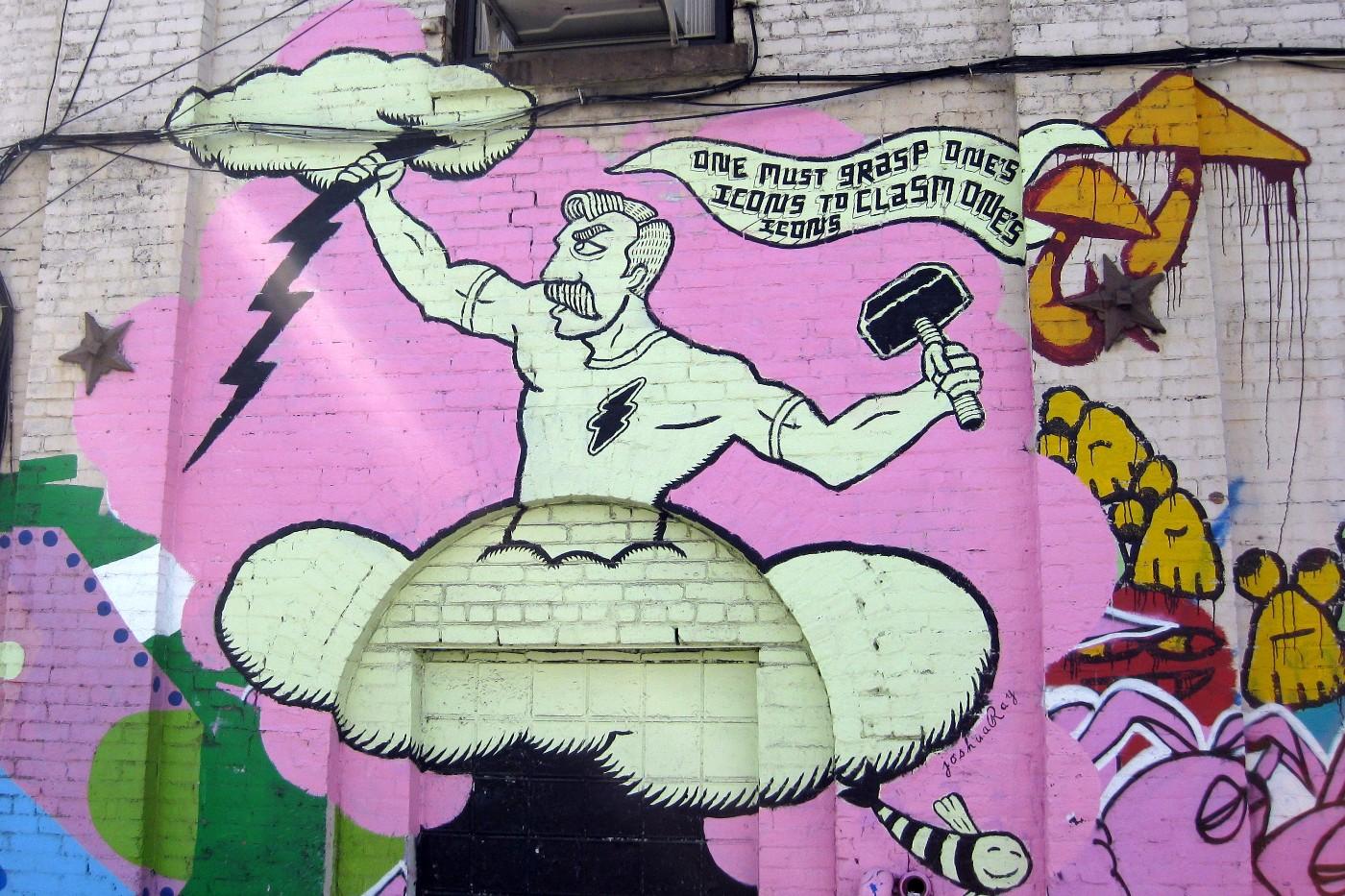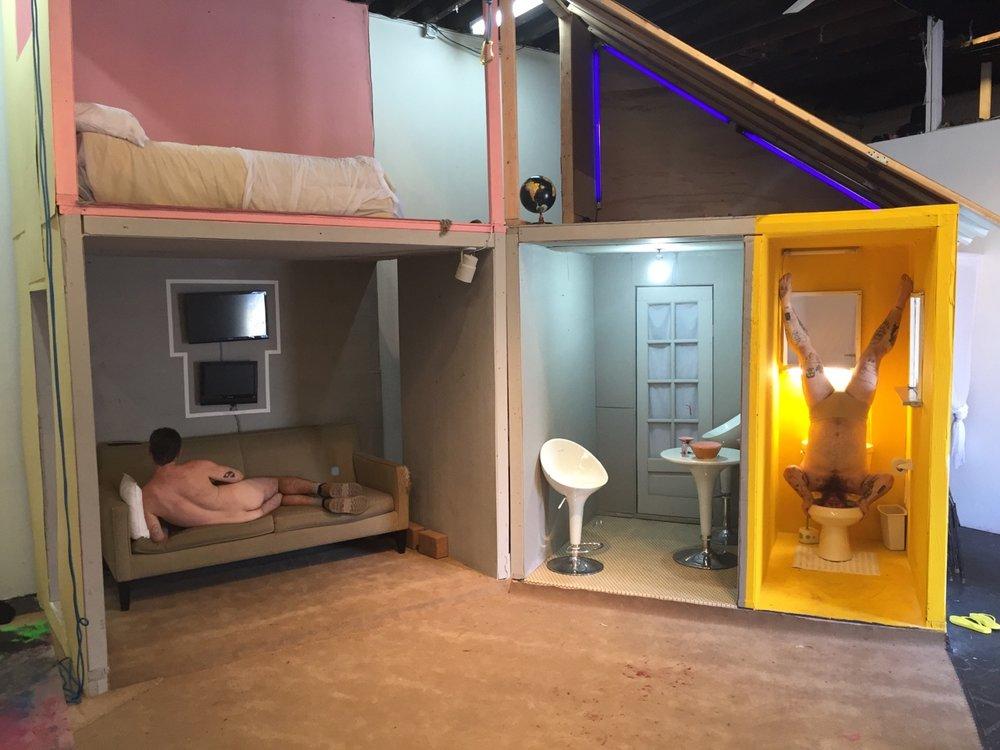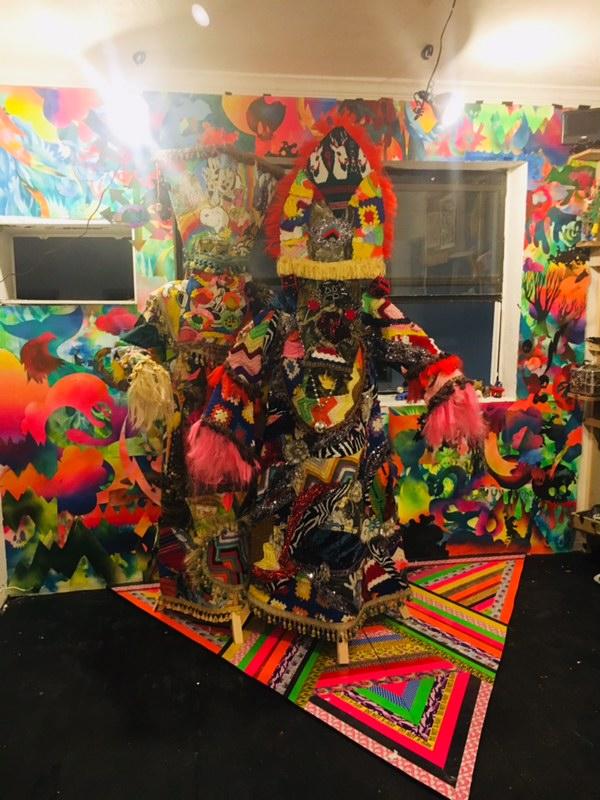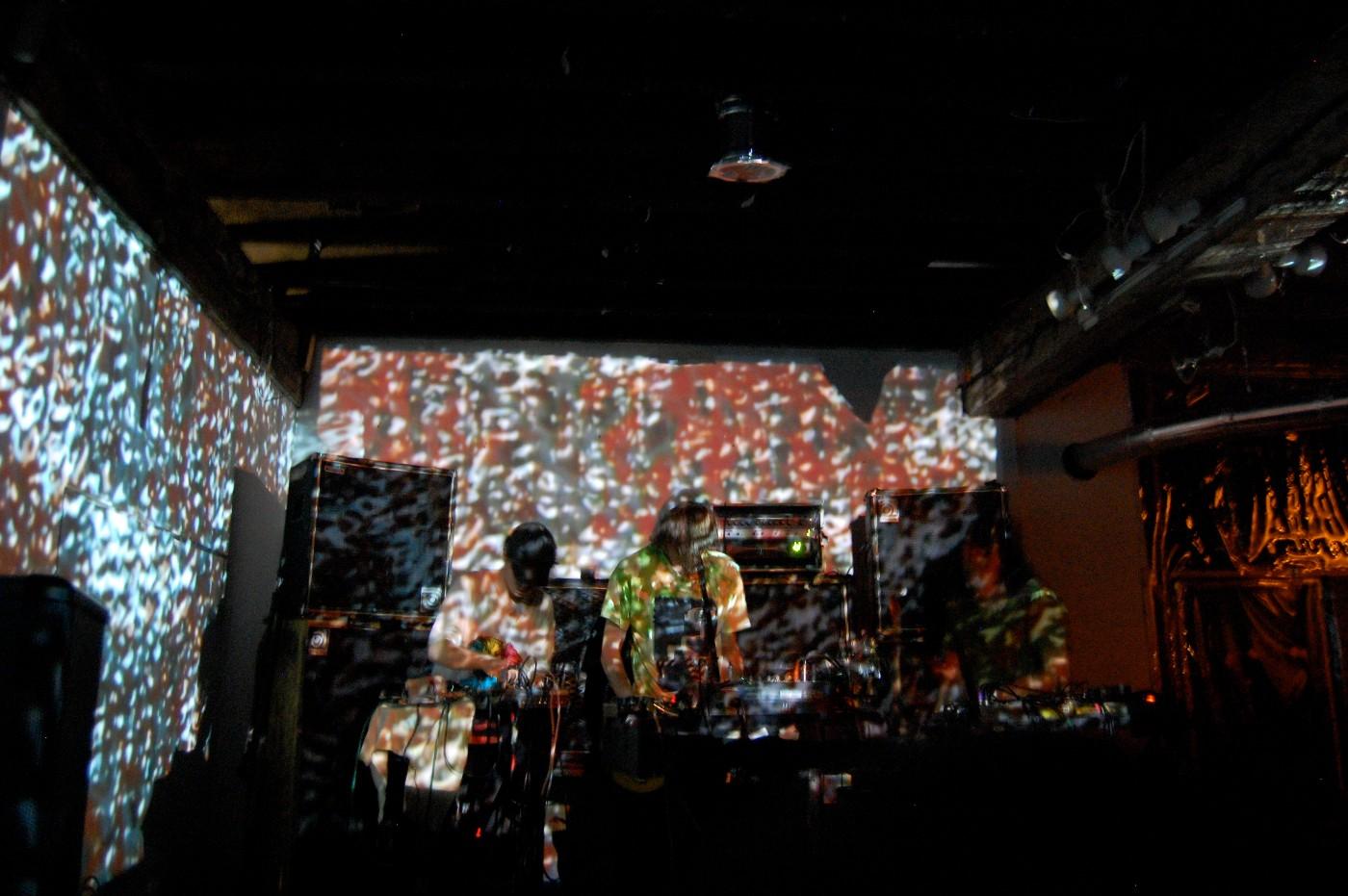NR: What was the genesis of Secret Project Robot and who have been your essential collaborators on that space other than co-founder Rachel Nelson? What was the first show at Secret Project Robot and how did that set the tone for your programming moving forward?
EZ: I don’t remember all that much about the first event at Secret Project Robot, believe it or not. What I do remember—it was out-of-control, packed, a line down the block! More than a single event, though, Secret Project Robot was an evolution. At one point during the lifecycle of Mighty Robot, me and my collaborators decided that visual art and installations should be a more significant part of our output. So, in 2004, I found cheap rent on a vacant building on the Williamsburg waterfront and rented it with Karl larocca. Karl and I brought in collaborators Todd P and Vasti Windish to establish the space as Monster Island. Monster Island consisted of: Live with Animals, Kayrock screen printing, practice spaces, a communal party space, art studios, Oneida’s Ocropulous, Mollusk Surf Shop and Secret Project Robot. At this point, Rachel became involved and helped build Secret Project Robot toward what it is today.
As for collaborators, there are so many people to credit! Secret Project Robot has had three different locations and each location had core collaborators and supporters. Other than folks I’ve previously mentioned, I’ll credit Chris Uphues, Doug Roussin, Zack and Eli leirhoff, Dave Kadden, Raúl de Nieves, and Simon Leary. I want to add more and more names! So many people have contributed in so many ways—big and small, but all essential.




























